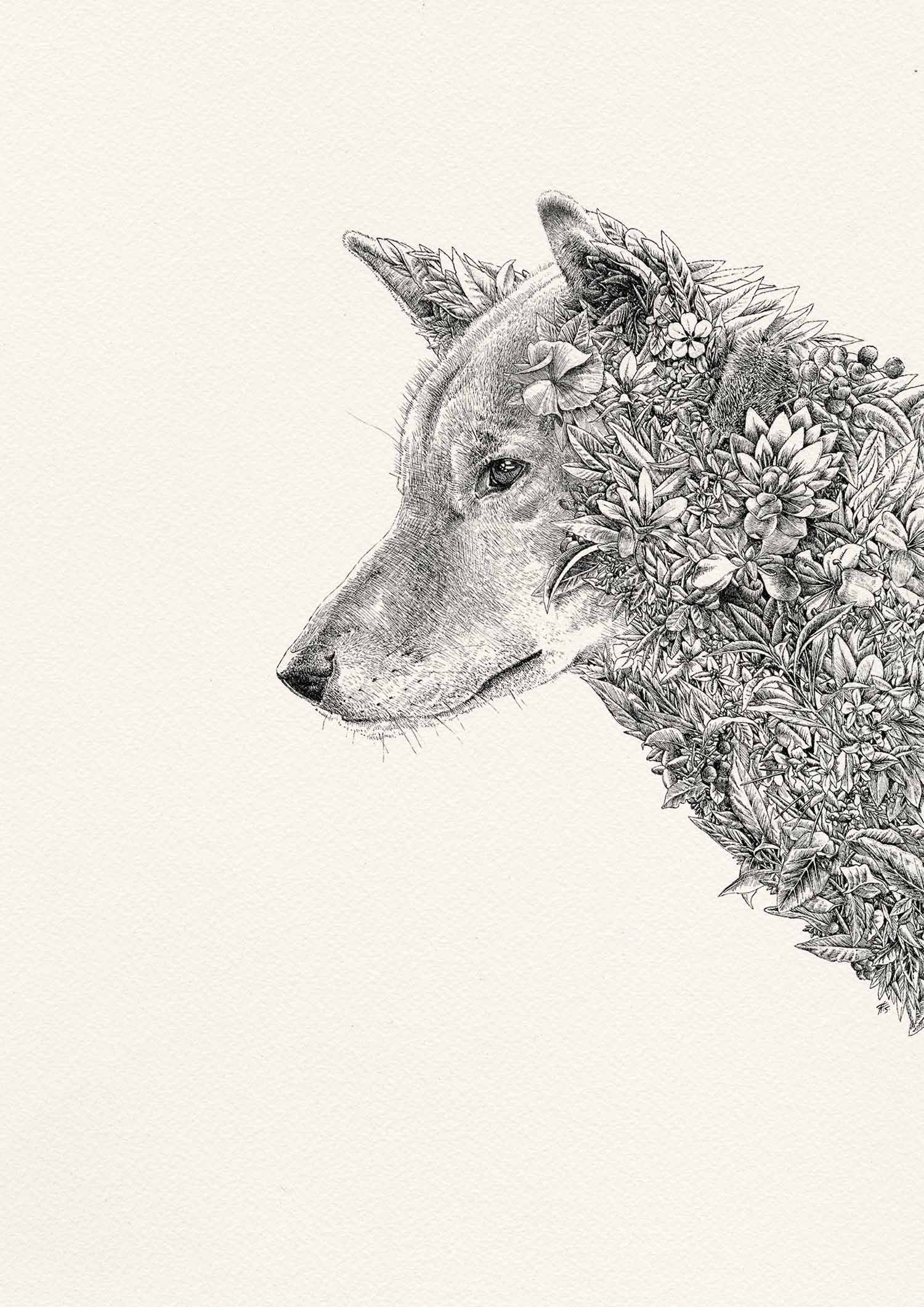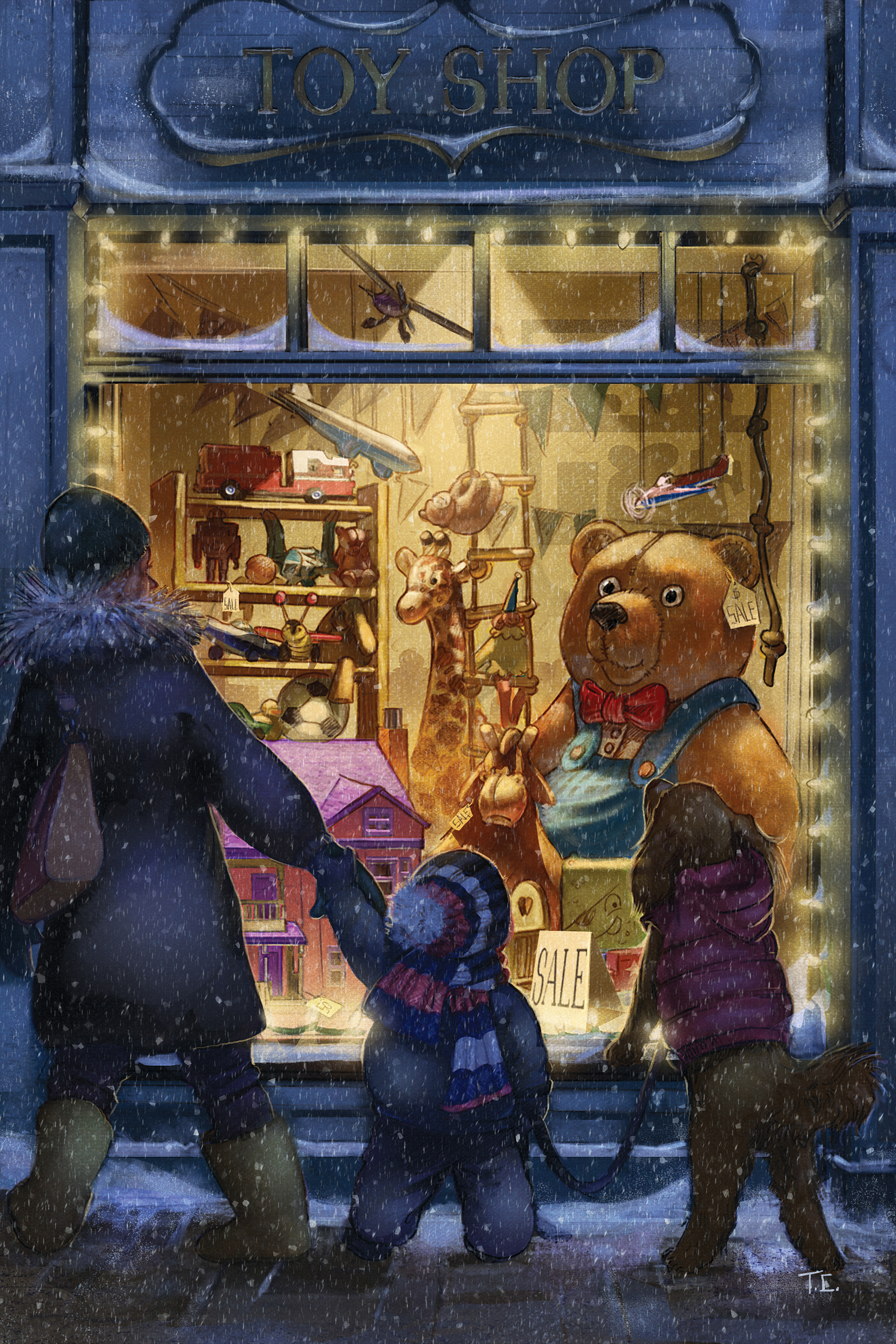Hello Marco, It is a pleasure to be interviewing you today. Your pieces are able to convey such a strong message with visual metaphors and juxtaposition in uncluttered compositions.
Your work is predominantly editorial based, hitting hard topics related to world events. Are you commissioned for specific pieces by magazines or do you follow current events and create art to action to publications?
I am commissioned to do my work through the art agency I work with. However I don’t only work on commissions, I work on personal work as well. And sometimes it works out that the personal work I create some one wants to use or buy.
How did you come across your style?
I took a short course in Milano on digital illustration with my friend and got really inspired by the work of my teacher Alessandro Gottardo, an example of his work being ‘Shout’. This illustration course really shifted my attention into editorial styled work.
I now work both traditionally and digitally. Most of my professional work being produced digitally however I do do paintings for clients. I am actually currently an artist in residence in Chang Mai (Thailand) working traditionally, oil on canvas. I love to paint but for the kind of work I do it is easier and time saving to do work digitally with just my laptop.
How long does it take you to finish a piece? Do you research heavily into the subject and stories you are trying to convey? Do you draft our several thumbnails before deciding on a final concept?
The length of time it takes for me to do my work often depends on the time buffer the client has given me. For instance I am currently working on an illustration for Amsterdam magazine and I was given 3 days. Which means one day for sketch and the rest for client review and final artwork.
I like to do my work and then walk away for a time so when I return I can see more clearly my mistakes. I like to take my process slowly so I can get my work perfect. The style I do isn’t overly detailed and the style I do is simplistic and means that developing the final illustration once the concept is created is fairly quick.
Often the client will give me the article to work off or tell me a synopsis of the topic. After that I will research the topic online (especially if I find it fascinating) and search for images surrounding the topic to get a feel for the work I need to produce. After this I sketch out ideas and thumbnail sketches. After that I send a small selection of my sketches to the art director of the project, 3 to 4, I want to be as direct as possible and make the choice for the art director as easy as possible. Once the art director has selected their preferred sketch I create a final illustration for them.
Your colour selection within your works is very coherent and often limited to a small palette, do you plan your palettes or does you art just flow and have its own mind?
My colour palette is both planned and transforms with the art. I often pick small colours for a question of time. I want to make my image as impactful as possible with the simplest illustrative form. Too many colours make your work overly complicated and less colour helps you with creating a message and directing your viewers attention. In editorial you want an immediate reaction from your audience and control of colour makes this reaction easier to control.
Through an online store you sell prints and products featuring your illustration in a print on demand basis. How does this practice help or hinder your artistic career? Do you ever run into licensing issues with your work?
I sell my products online through Society 6. It is a nice way to have a little bit extra cash flow, I can decide how much money I want to make on my products and that just adds on the the companies price for the consumer. I try to keep my work as close to base price as I can.
Some people ask me to recreated traditional paintings and such on my prints I sell through my store, which I hop to one day offer. However I enjoy using the store because without the ease of print on demand I wouldn’t be able to offer these products and sell my work in this way. It is a way to make money on works I already have created. My store is not a main source of income and I could not live off it but it is a little bit of income audit just adds up overtime.
I sell work I have previously done for magazines so creating store content is of no extra cost for me. Unless the magazine has asked specifically for the copyright I am free to use the image in anyway I want including selling it on to other buyers and clients. In most cases the magazine does not ask for the rights for the image.
How did you get into the editorial illustration sphere? How has your career progress to reach this point?
After the course in Milano I knew I wanted to do editorial illustration. Illustration was what I was good at. I can reach more people with this illustrations than with paintings in a gallery.
I started working professionally in 2009 in my home of Italy. It was almost impossible though because life is expensive in this part of the world and I was often having to find little jobs to flesh out my income and couldn’t concentrate on illustrate.
I moved to be with my brother in Mexico city where the lifestyle was cheaper so I could live off my work, working through a US illustration agency. with just one piece of work I could survive for a month. In Mexico I could just focus on my work and improve and gain more clients, from here on it was only illustration work.
The only skill I have in my life is drawing and any way I can keep doing this as a profession I will.
Have you had formal training in your craft? if so can you tell us a bit about your experiences?
I did art in high school and went to an art college studying in fine art painting. After I did a short course in Milano in Digital Illustration in 2008 taught by Alessandro Gottardo. I have always done art and painting, I didn’t just wake up one morning and decide this is what I will do.
does working professionally in illustration diminish some of your passion for the work you do?
You always love your work, but sometimes there are commissions which I am not interested in and although I try to make the best work I can even when the subject doesn’t interest me.
Although as a whole I don’t think my passion has declined being a professional illustrator. Just knowing that your work isn’t just for you but for a wider audience keeps your passion alive and motivated.
How does your cultural background and environment impact your work?
My culture is not huge impact on my work. I travel a lot but unless the illustration is about a specific place the place and culture aren’t a huge impact. The place I am isn’t a muse, however, the more you travel the more you see stuff from another point of view.
You cannot tell where I am when I make my illustrations, I take advantage of my ability to travel with this career and my current life situation but it doesn’t greatly impact my work. I have been from Milano to Mexico, Russia, Lithuania,Thailand and on. I highly recommend travel, but more as a benefit to your life experience rather than your art.
Do you have advice for illustrators beginning their creative journey?
My advice is to keep working, keep trying. Until you try you don’t have a chance. Follow your passion but be realistic. Combine what you love with something that is professionally possible, you aren’t just creating art you are working in a profession. Adapt your passion to allow you to create a business and job from what you love. Leave yourself open to adapt a little bit and leave a little room for reality, this is the difference between a hobby and work.
Out of your published works which is your favourite and why?
My Favourite piece would be a political piece I did turning a politician into Pinocchio. I enjoyed creating it, it was humours and clever. I enjoyed doing this piece as the magazine it was illustrated for often has interesting philosophical topics which I enjoy.










